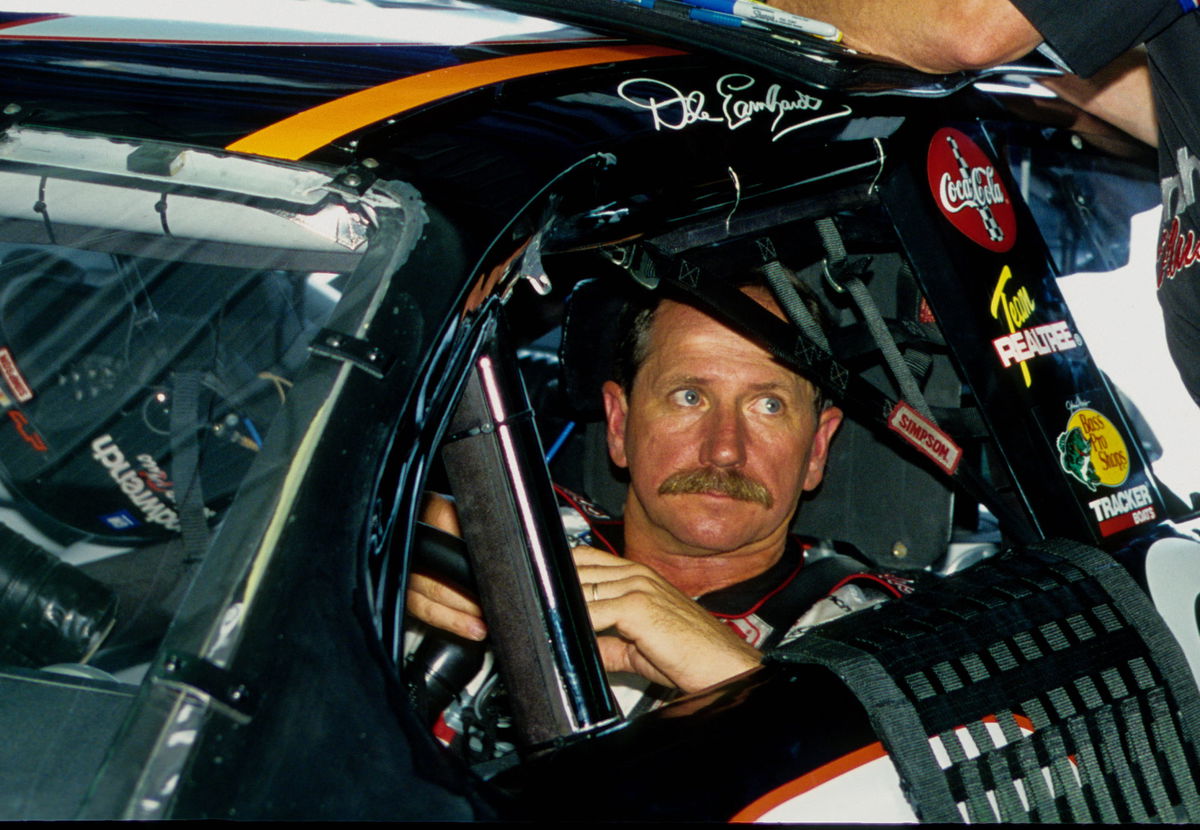
Imago
Dale Earnhardt Sr | Image Credits: Imago

Imago
Dale Earnhardt Sr | Image Credits: Imago
In 2024, NASCAR signed a landmark seven-year media deal that reshaped how fans will watch the sport. For the first time, a major streaming platform, Amazon Prime Video, entered the fray. Their official broadcast debut comes at Charlotte with the Coca-Cola 600, but they didn’t wait until race day to drop the hammer. On May 22, Amazon dropped the first two episodes of their much-anticipated four-part documentary, Earnhardt. Just like that, Dale Earnhardt was back in the headlines, this time, not for his daring moves, but for the life behind the wheel.
Watch What’s Trending Now!
Director Joshua Altman had set expectations high. He promised a human story. “Let’s tell a family story. Much in the way that The Godfather isn’t about a mobster… It’s really about a family,” he said. And with these first two episodes, the series hits that exact tone. Earnhardt isn’t just about racing, it’s about identity, sacrifice, and legacy. It pulls you in, not with stats or replays, but with raw emotion and old wounds that never fully healed. This is no puff piece. It’s a mirror to the soul of a man who defined a generation of racing.
The first episode lays the groundwork. We see how Dale Earnhardt Sr. clawed his way into the NASCAR elite. He was racing while broke, juggling fatherhood, and still finding his voice. It explores the rise of The Intimidator, a man who thrived on chaos and contact. But it also reveals the cost of all that fire, the relationships frayed, the family distance, and a son desperate for approval. No spoilers here, but if you think it’s just a racing highlight reel, think again. It’s a punch to the chest. Now it’s time to explore Episode 2.
ADVERTISEMENT
The Intimidator meets the man in the mirror
Episode two of Earnhardt takes a hard turn from where the first one left off. But if you haven’t read that, check it out here. This time, we don’t just see the driver. We see the man. The legend fades into the background, and the father steps forward. From the opening moment, the episode punches you with the brutal truth that drivers race with the knowledge that they might never return. And still, they go. It’s a somber note to start on, but it sets the stage for an episode that’s as emotional as it is powerful.
While Episode 1 was about how Dale Sr. was fighting adversity on track to make his way among the elites of the sport, the following episode was more about Dale trying to figure out how to be present for his kids while being a ghost in their lives. The series shows us a man torn between the roar of the crowd and the quiet pain of a distant family. His bond with his late father haunts him. His absence in his older children’s lives cuts deep. He even admits, “I think [my dad] would be proud of my career… but he’d probably kick my b— for sacrificing at times with family.”
ADVERTISEMENT
Like father, like son. Earnhardt is now streaming. pic.twitter.com/eqlSN8bnOY
— Prime Video (@PrimeVideo) May 22, 2025
That one line tells you everything about Dale’s heart, it was always racing, but never quite home. You feel the tension between who Dale was on the track and who he tried to be off it. His friendship with Neil Bonnett adds a layer of warmth and pain. Neil was more than a buddy, they were kindred spirits. Neil’s retirement after memory loss from a crash breaks something in Dale. He doesn’t show it much. But you see it. And later, when tragedy returns, Dale doesn’t talk. He drives, pushes, and wins. But you know he’s breaking inside.
ADVERTISEMENT
One of the most powerful threads in this episode is his relationship with his son, Dale Jr, who didn’t just look up to his dad, he idolized him. He kept a picture of Dale’s Pocono crash in his locker like a badge of honor. But admiration doesn’t always translate to connection. They were father and son, but also strangers, separated by fame, fear, and silence. This episode captures that heartbreaking distance without ever exploiting it. It’s not just storytelling, it’s soul-searching.
Top Stories
FOX Earns Rare Moment of Respect as NFL Honors NASCAR Legend Live on Air

NASCAR Radio Host Rejects Denny Hamlin’s Warning Amidst Call for Ex-Fox Broadcaster’s Apology

Corey LaJoie Pokes Joey Logano With Backhanded Dig After Star NFL Appearance

Ford Star’s Future in Doubt as 33-Year-Old Rumored to Jump Ship Amid Contract Uncertainty

Racing Broadcaster Gets Emotional as He Warns Fans Against What NASCAR Has Lost

Dale Earnhardt’s legacy lives on, and so does the series
What stands out in Episode 2 is how Dale Sr. changes over time. When Taylor Nicole is born, something softens in him. The tough guy becomes tender. He’s still The Intimidator on the track, but at home, he starts leaning in, not away. The documentary shows us the slow transformation of a man who started to understand what his kids needed, not trophies, but time. And for the first time, you feel like he was trying to give it.
ADVERTISEMENT
And then, racing pulls him back. It always did. The infamous “Pass in the Grass” is shown with the intensity it deserves. It’s chaos, control, and pure Dale. You get why he was loved and hated. But the episode doesn’t linger on wins. It lingers on wounds. The crash that cost him a championship because of teammate Ricky Rudd’s rebellion hurts more than the metal and smoke. It’s the betrayal that lingers.
But the final moment of the episode is shockingly very, very heartbreaking. NASCAR fans remember what happened on February 18, 2001, at Daytona International Speedway, but nobody knows that Dale Earnhardt saw it seven years before his death. We won’t spoil it, but in 1994, Dale won a championship. And there’s a reason why that title meant more than any other. It’s not about the record he matched. It’s about the man he lost in February and didn’t talk about him until he matched Richard Petty’s record.
The moment he dedicates that win is the closest we’ve seen to the real Dale Earnhardt. And it hurts. If you watch nothing else, watch this episode for that reason alone. With two episodes down, Earnhardt has proven it’s not just another sports documentary. It’s a memoir, told in motion and memory. And what makes it resonate is that it never tries to make Dale Earnhardt a hero. It shows him as he was, fearless, flawed, stubborn, and soft in places he never wanted anyone to see. This second episode leans into that truth. It’s not an easy watch if you can’t control your emotions.
ADVERTISEMENT
As fans, we remember the wins. But this series asks us to remember the man. A father who struggled. A friend who suffered. A driver who could never slow down, even when the world begged him to. What’s most powerful is how it forces us to reckon with the pain behind the black No. 3. It makes you realize that “The Intimidator” was just an armor. An Armor hiding a soul that ached like anyone else’s.
ADVERTISEMENT
ADVERTISEMENT
ADVERTISEMENT

